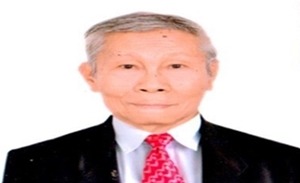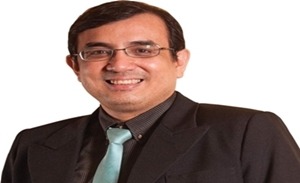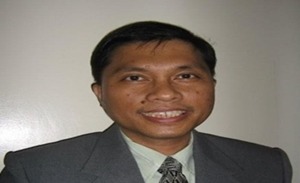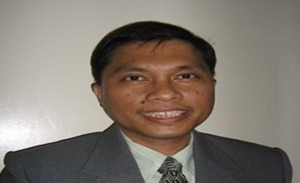GLIMPSES & GAZES
By Severino C. Samonte

He retired as executive news editor in 2003. He also served as executive editor of the Malacanang-based Presidential News Desk from 1993 to 1996 and from 2005 to 2008.
The five-letter acronym “LEDAC” stands for Legislative-Executive Development Advisory Council which has been established under Republic Act (RA) 7640 signed on Dec. 9, 1992 by then President Fidel V. Ramos (FVR).
Its primary function is to serve as an advisory and consultative body to the incumbent President who chairs it. Its members include the Vice President, the Senate President, the Speaker of the House of Representatives, and the Cabinet members, including the head of the Presidential Legal Liaison Office (PLLO).
RA 7640 was enacted by the two-chamber Congress during the time of Senate President Edgardo J. Angara and House Speaker Jose C. De Venecia Jr.
In the early years of the FVR administration, the President had to convene the LEDAC weekly, especially during the time he was struggling to resolve the daily power crisis he inherited from his predecessor.
I happened to be working then as executive editor of the newly organized Presidential News Desk (PND) under the Office of the Press Secretary in Malacañang in 1993 and I noted with much interest and satisfaction the usefulness of the LEDAC meetings in ensuring the speedy and timely passage of vital administration measures, programs and projects.
During such meetings, questionable and needless components of any proposed programs or projects were threshed out easily.
In the case of a measure that needed approval by the two chambers of Congress, any of its objectionable provisions was corrected or deleted, thus eliminating the possibility of a new law or a portion of it being vetoed by the Chief Executive.
This, in turn, was considered beneficial for the government, in particular, and the people, in general, because the country’s lawmakers no longer needed to waste precious time and funds for deliberating over a law that otherwise would be disapproved by the President.
That was why I was both disappointed and surprised when I read in the newspapers and heard from radio and-television newscasts sometime last January that a scheduled LEDAC meeting in Malacañang was canceled. Although the Palace did not give any specific reason for such a move, it was surmised by many people that it was due to the continuing arguments among the senators and the members of the House regarding the revival of the proposed to amend or revise the 1987 Constitution.
I thought that if such a LEDAC meeting pushed through, perhaps the key officials of the Executive and Legislative branches of the national government could have discussed and reached a common stand on a current proposal to increase the legislated daily minimum wage of private workers nationwide.
That way, they could have prevented the current debates over the proposed wage increase, with the senators approving a bill for a PHP100 hike against the PHP150 to PHP350 proposed by the House members.
By the way, because of the timely utilization by President Ramos of the authority provided by the LEDAC, plus the emergency powers granted to him by Congress in 1993, he managed to end the crippling power crisis that was prevailing in the country when he began his six-year term in 1992.
In his book, “The Red Pen: My Adventures with FVR,” author Jojo T. Terencio, a close-in writer of Ramos from 1992 to 1998, said that in his inaugural address on June 30, 1992, the President vowed “to nurse the economy back to health and propel it to growth.
“This also meant fixing the power crisis that plagued the country. The power outage tremendously affected the productivity of many industries as well as government and private offices which led to poor performance. We cannot dream of development while our homes and factories are in darkness.”
Terencio added: “Hence, the President promised to the Filipino people that the power crisis will be over by the end of 1993 and the nation can celebrate a brighter Christmas because there will be abundance of electricity.
“To solve the crisis, FVR was granted emergency powers by Congress so energy-related infrastructure projects can be expedited without going through the regular process. Most of these projects were constructed under the Build-Operate-Transfer (BOT) scheme. By December 1992, FVR also signed the law creating the Department of Energy (DOE).
“Many people were doubtful if FVR could deliver on his promises. By June 12, 1993, when he spoke at the 95th Independence Day celebration at the Luneta and reiterated his promise to end brownouts by Christmas, his speech was received half-heartedly and with lukewarm applause. Not a few people raised eyebrows.
“Even newspaper columnists and political commentators doubted the capacity of the Ramos administration to produce the then 900 to 1,200-megawatt deficit in time for Christmas. Critics even mocked him.
“But FVR had the last laugh when December 1993 came. It was the first time in three years that Metro Manila was glittering with lights again. The central business district in Makati went full blast in decorating its main thoroughfare, the Ayala Avenue, with various Christmas decors that sparkled at night.
“The crisis was over. FVR delivered. Later on, McGraw-Hill’s Electric Power International Magazine featured Ramos in an article titled ‘Ramos’ private power policies payoff: Blackout disappears, economy prospers.”





